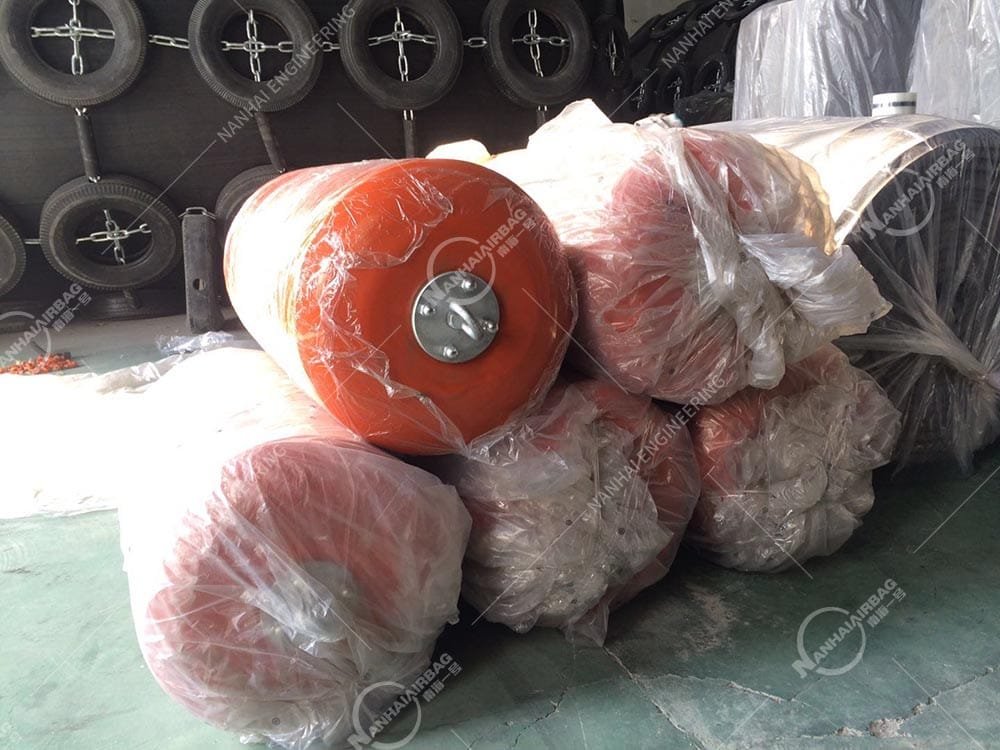Pneumatic Fenders With Tires
02/04/2025Application of Pneumatic Fenders
02/06/2025Foam Fenders

A foam fender is a type of marine fender commonly used in docking systems to protect both ships and docking structures during berthing or mooring. These fenders are designed to absorb the energy of a ship’s impact when it docks, helping to prevent damage to both the vessel and the dock.
Key Features of Foam Fenders:
- Material Composition:
- Foam fenders are typically made from closed-cell polyethylene foam or polyurethane foam, which gives them their buoyancy and durability. These materials are lightweight, resistant to water absorption, and have excellent energy absorption properties.
- The foam is often encased in a tough outer layer of reinforced rubber or plastic, providing further protection and durability.
- Buoyancy:
- Due to the foam’s structure, foam fenders are inherently buoyant, allowing them to float on the water’s surface. This buoyancy makes them ideal for use in environments where they need to stay in position, even when subjected to forceful impacts from ships.
- Energy Absorption:
- Foam fenders are designed to absorb the kinetic energy generated by a ship’s movement when docking. The foam compresses upon impact, which significantly reduces the amount of force transferred to the vessel and the dock.
- This helps prevent damage such as dents or scratches to the ship’s hull or the structure of the dock.
- Shape and Size:
- Foam fenders come in a variety of shapes, such as cylindrical, conical, and D-shaped. Their size and shape are selected based on the type of vessel and the docking conditions.
- They can be used in both small and large-scale marine applications, ranging from small boat docks to large cargo ship terminals.
- Durability and Longevity:
- Foam fenders are highly durable and resistant to UV rays, ozone, and saltwater. They are built to withstand prolonged exposure to harsh marine environments.
- The tough outer cover helps protect the foam from abrasion, punctures, and wear.
- Maintenance:
- One of the advantages of foam fenders is that they require relatively little maintenance compared to traditional rubber fenders. Since they do not absorb water, they are less likely to degrade over time.
- Customization:
- Foam fenders can be customized for specific applications. They can be produced in different sizes, colors, and with additional protective layers to meet the unique needs of the docking operation.
